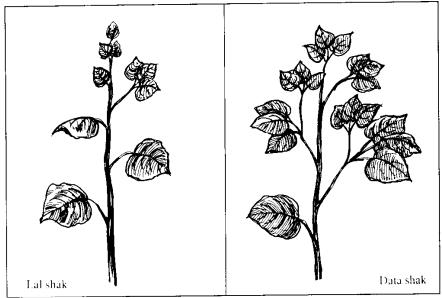Today is our topic of discussion Writing description 2
Writing description 2
Look at the picture and then read the points about how amaranth is grown

Fig : Amaranth
Points
planting time : all the year round
soil condition : any soil with some compost or cowdung
spacing : 3″-4″ between plants
depth to plant seed : 1/4″
days to germination : 4-6
planting instructions: soil well-prepared broadcast seeds–cover beds with soil water beds
care : soil moist until germination-begin thinning when the plants are 2-3 inches tall-weed the beds put manure into the soils
harvesting : pick leaves frequently collect the plants when needed
usefulness : source of vitamins and minerals

Read the model description to answer the following questions.
Amaranth
Amaranth known as ‘lal Shak’ and ‘data shak’ are popular vegetables in Bangladesh. It grows well everywhere and any time of the year. It grows in any soil that contains some compost or cowdung. The seeds are broadcast in well-prepared soil at a depth of ¼”. After the seeds are broadcast, proper care is necessary for germination.
That is, the soil should be watered and kept moist until the seeds germinate in 4-6 days. Thinning should begin when the plants become 2-3 inches tall. This is the time when weeding should begin. To help leaf-growth liquid manure can be used in the soil.
Thinning should continue during the early days of the plants until there is spacing of 3″-4″ between the plants. Leaves should be picked frequently so that garden-fresh amaranth could be eaten for quite a long time. Both leaves and plants of amaranth are an excellent source of vitamins and minerals.
Questions:
1. Which parts of Bangladesh grow amaranth well?
2. What kind of soil is suitable for the growth of amaranth?
3. How long does the germination of amaranth seeds take?

4. Why is thinning necessary for the young plants?
5. What food value does amaranth have?
